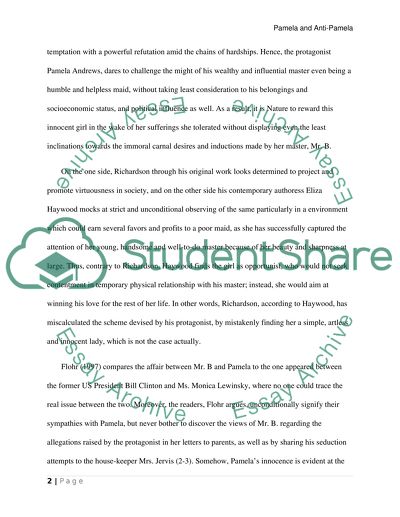Cite this document
(“Pamela and Anti-Pamela Research Paper Example | Topics and Well Written Essays - 2000 words”, n.d.)
Pamela and Anti-Pamela Research Paper Example | Topics and Well Written Essays - 2000 words. Retrieved from https://studentshare.org/literature/1463298-compare-and-contrast-pamela-by-samuel-richardson
Pamela and Anti-Pamela Research Paper Example | Topics and Well Written Essays - 2000 words. Retrieved from https://studentshare.org/literature/1463298-compare-and-contrast-pamela-by-samuel-richardson
(Pamela and Anti-Pamela Research Paper Example | Topics and Well Written Essays - 2000 Words)
Pamela and Anti-Pamela Research Paper Example | Topics and Well Written Essays - 2000 Words. https://studentshare.org/literature/1463298-compare-and-contrast-pamela-by-samuel-richardson.
Pamela and Anti-Pamela Research Paper Example | Topics and Well Written Essays - 2000 Words. https://studentshare.org/literature/1463298-compare-and-contrast-pamela-by-samuel-richardson.
“Pamela and Anti-Pamela Research Paper Example | Topics and Well Written Essays - 2000 Words”, n.d. https://studentshare.org/literature/1463298-compare-and-contrast-pamela-by-samuel-richardson.


